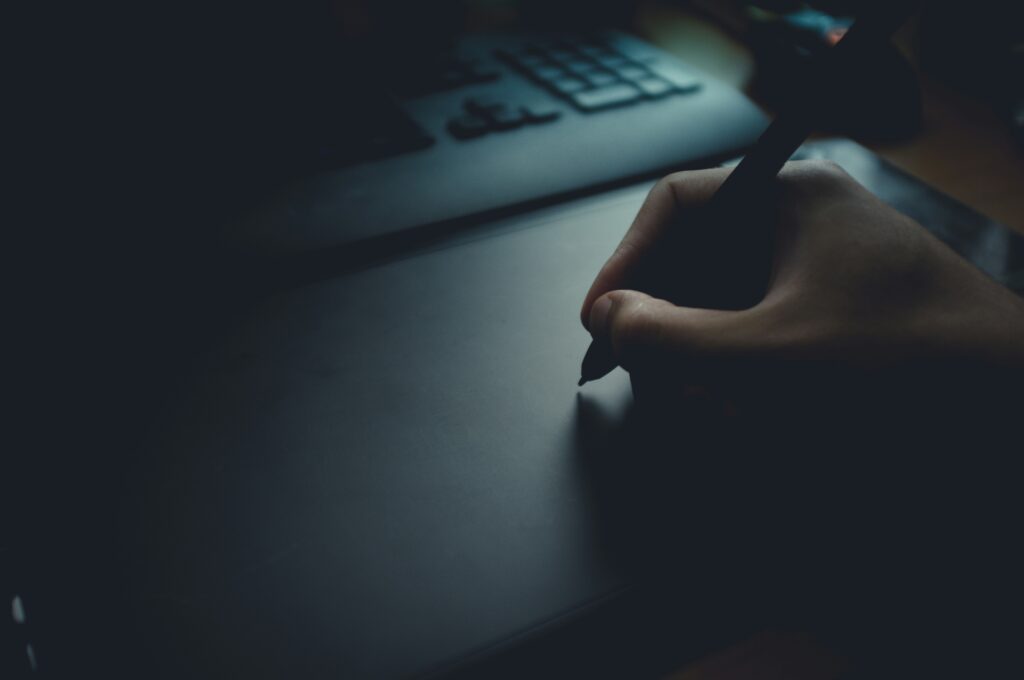A logo is more than just a visual element—it’s the center of your brand identity. It helps people immediately recognize your business and associate with your brand message. With countless design options available, knowing how to choose the perfect logo that reflects your unique vision can be daunting. Should you go with a wordmark logo, an abstract logo, or an icon logo? And how do you ensure that the logo will grow with your business?
This guide will provide tips on how to choose the right logo, explore logo types, and offer strategies that help you choose a logo that truly represents your brand and resonates with your target audience.
What is a Logo, and Why is It Important for Your Brand?
Your logo is often the first impression your audience has of your business. Whether it’s a simple logo or a more detailed symbol logo, it acts as a powerful identifier, representing your business and establishing credibility.
Think about iconic brand logos like Apple’s bitten apple or McDonald’s golden arches. These great logos have become synonymous with the companies themselves. This logo might seem like a small detail, but it holds significant power in shaping how your brand is perceived and remembered.
A business logo isn’t just decoration. It’s a tool that drives brand recognition, reinforces your brand values, and supports your marketing efforts as your business grows. It’s why companies invest time and resources in crafting a custom logo that aligns with their long-term goals.
Understanding the Role of a Logo in Brand Identity
A well-designed logo anchors your brand identity. Its design communicates who you are and what your business stands for. This is why your logo needs to reflect your core values and help customers identify with your brand. For mission-driven organizations, like nonprofits, logos often convey purpose and vision through abstract symbols or human-focused imagery. For businesses like speakers and consultants, a clean wordmark logo emphasizes the name of your business, building trust through simplicity.
Your company logo should function cohesively with your overall brand presence. This means the colors, fonts, and graphics should be consistent with the rest of your branding to reinforce your brand message.
What Are the Different Types of Logos You Can Choose From?

There are different types of logo designs, each with its own benefits depending on your branding needs. Let’s break down a few common types:
- Wordmark Logo:
This style highlights the company name or brand name with unique typography. Think Google or Disney. Wordmarks work well when your business has a distinct name that you want to promote prominently. - Symbol Logo:
Also known as a pictorial logo, this type features a standalone image to represent your business—like the Nike swoosh. It’s effective when you want a highly visual, memorable identifier. - Icon Logo:
A more flexible option that blends imagery and text. A logo icon works across various platforms, making it great for businesses with both digital and print needs. - Abstract Logo:
This design uses unique shapes and patterns to convey complex ideas. Nonprofits or tech startups often use abstract logos to suggest innovation, growth, or mission-driven work.
Each logotype offers specific benefits. Choosing the right one depends on your industry, audience, and the visual story you want to tell.
How to Choose an Effective Logo for Your Business
To choose an effective logo, start by focusing on these fundamentals:
- Understand Your Brand Message:
What do you want people to feel or think when they see your logo? A professional service provider might need a logo that emphasizes reliability, while a creative business might lean toward a unique design. - Make Sure You Pick the Right Design Elements:
Pay attention to color psychology, typography, and composition. The goal is to create a logo that reflects your brand values and communicates clearly. - Think About Versatility:
Your logo works across different platforms—websites, business cards, social media, and more. Ensure your logo looks good at various sizes and can adapt to both color and black-and-white versions. - Don’t Rely on a Free Logo:
Using a free logo might seem convenient, but it often lacks originality. Invest in a professional logo designer to create something tailored to your business needs.
Key Elements to Consider When Designing Your Logo
Here’s what you need to focus on when you design your logo:
- Choose Colors Wisely:
Colors evoke emotions and help reinforce your brand’s message. For example, blue often conveys trust, while red signifies energy and passion. - Choose a Font:
The font for your logo should reflect your brand’s tone and industry. A luxury brand might opt for a serif font to communicate elegance, while a tech company might prefer a modern sans-serif font. - Simplicity and Balance:
The style of your logo should focus on clarity. A simple logo design is more likely to be remembered and stand out in a crowded marketplace. - Design Trends:
While keeping up with logo design trends helps maintain relevance, prioritize timeless elements that won’t feel outdated in a few years.
Logo Design Trends to Consider
Current logo design trends emphasize minimalism, custom typography, and bold geometry. While trends can inform your choices, the logo is an ongoing process—it should evolve with your brand but remain recognizable.
Consider popular logo ideas like layered color gradients or hand-drawn elements, but balance them with core branding principles.
How Can You Work with a Logo Designer?

Collaborating with a logo designer allows you to create a professional and polished logo. Here’s how to get the most out of this relationship:
- Communicate Your Vision:
Explain your goals, values, and business objectives clearly. The designer can use this input to design a logo that aligns with your brand identity. - Explore Different Designs to Choose From:
Provide examples of logo projects or styles you like. Discuss variations, including potential symbol logos or abstract logos, to narrow your options. - Feedback and Revisions:
Be open to suggestions. Designers often understand subtle details, such as how specific colors or layouts influence audience perceptions.
Creative Nomads offers expert design services to help you craft a custom logo tailored to your business needs. Our team ensures that your logo aligns with your goals and delivers lasting impact.
Common Mistakes to Avoid
Avoid these pitfalls when designing a logo:
- A logo without versatility will struggle to adapt across platforms.
- Overcomplicating the design can reduce memorability.
- Neglecting your target audience’s preferences can result in a disconnect between your brand and its consumers.
Conclusion
Choosing the right logo is crucial for shaping your brand’s future. Investing in thoughtful design helps build your brand identity, increase brand recognition, and drive long-term success. Whether you’re starting from scratch or looking for a refresh, Creative Nomads can help you design a logo that makes a lasting impression.
Let’s create a logo that works for your business—contact us today!


